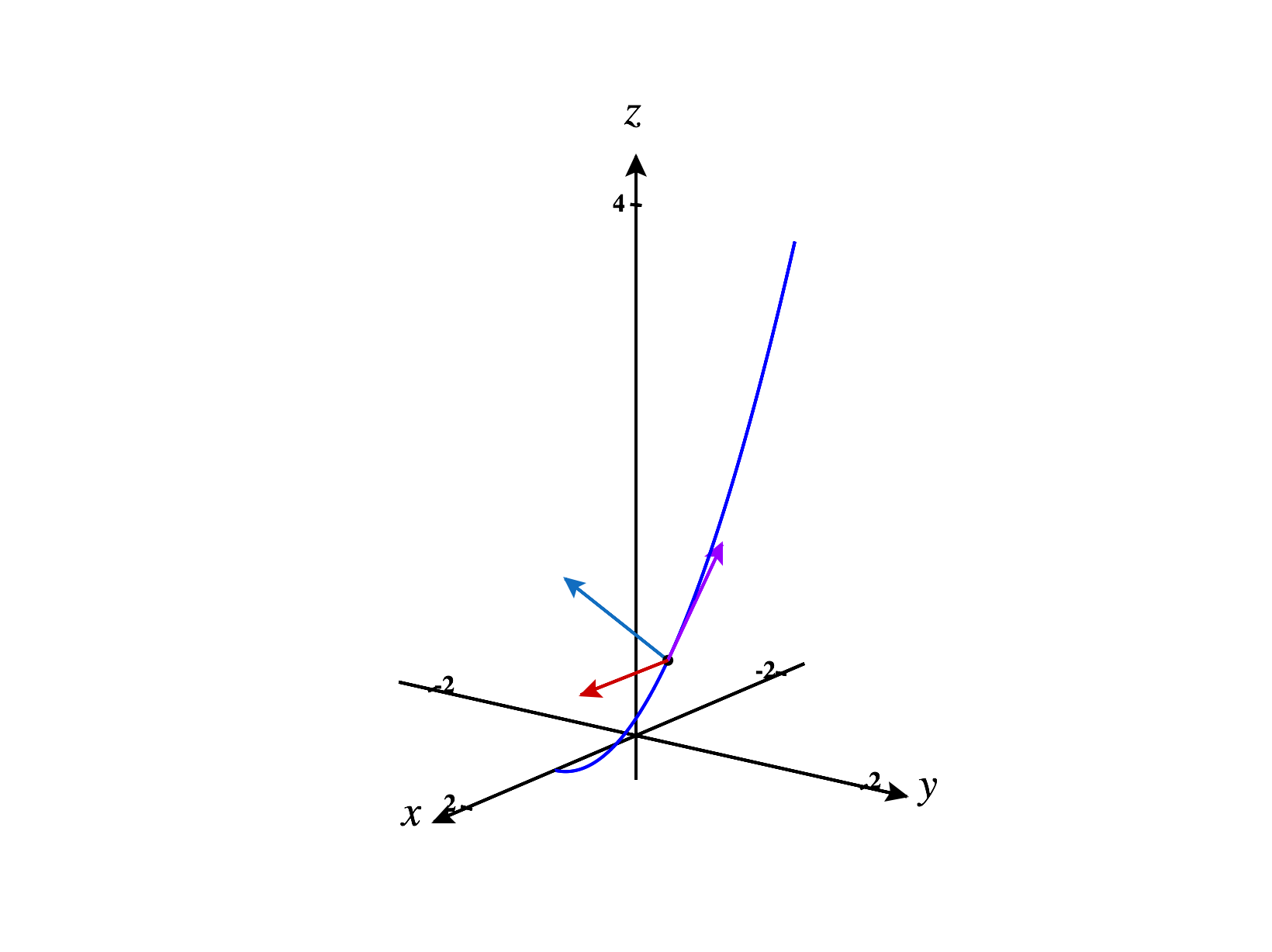Recall our definition of the moving frame:
is the unit tangent vector,
is the unit normal vector,
is the unit binormal vector,
The moving frame is also called the TNB frame.
We’ll now work through some moving frame computations. These computations can sometimes get quite nasty, so it’s important to simplify as you go, and plug in points when possible.
Examples
In order to find the unit tangent vector, we first need to find the velocity vector. Computing the length, we have From these, we compute
Plugging in , we have Next, we need to find the unit binormal vector. For this, we first need to find . Computing the length, we have From these, we compute
Plugging in , we have Finally, we need to find the unit binormal vector.
Plugging in , we have
Since we only need the moving frame for one specific value of , we’ll plug in this value as soon as we can, to help simplify computation. However, we need to make sure that we’ve taken all necessary derivatives before plugging in .
In order to find the unit tangent vector, we first need to find the velocity vector. If we only needed to find , we could plug in at this point. However, we will eventually need to differentiate to find , so we’ll hold off on plugging in for now.
Next, we find the length of .
Then, we have that the unit tangent vector is
Plugging in , we have
Next, we differentiate . Take a moment to revel in gratitude that we’re doing this computation for you. At this point, we don’t have anymore derivatives to take, so we’ll plug in before continuing our computation. The length of this vector is From these, we compute the unit normal vector when ,
Finally, we compute the unit binormal vector when .
Notice how helpful it was to plug in as early as we could!

Images were generated using CalcPlot3D.